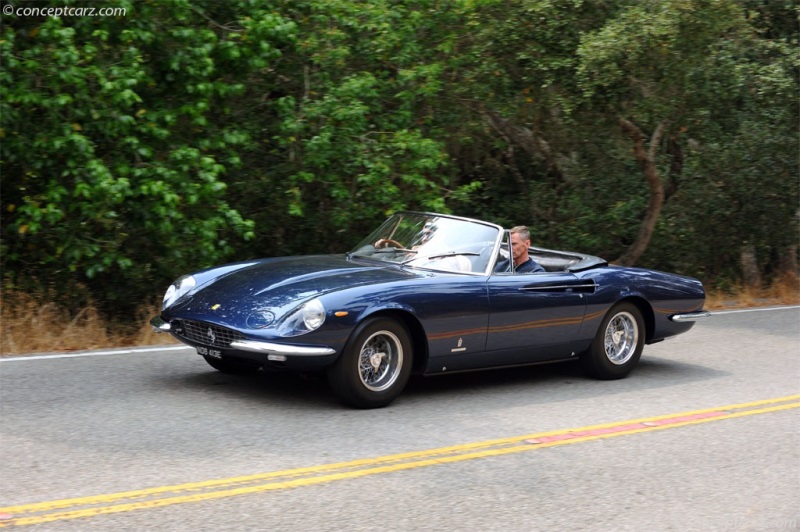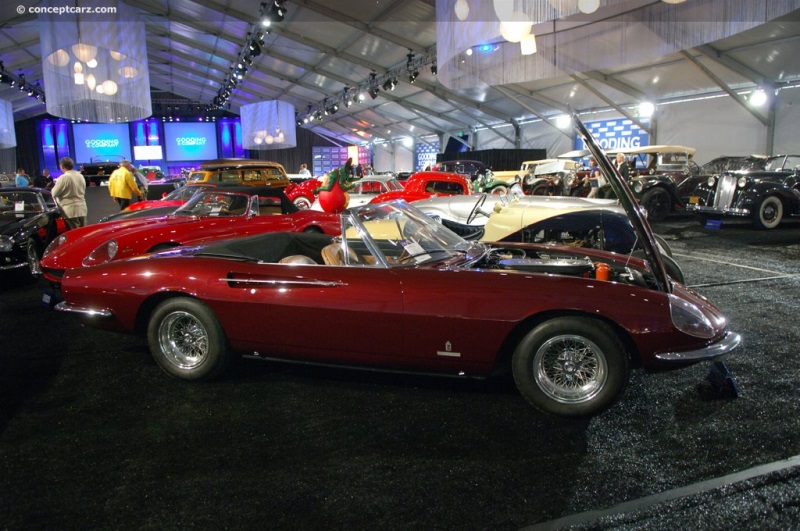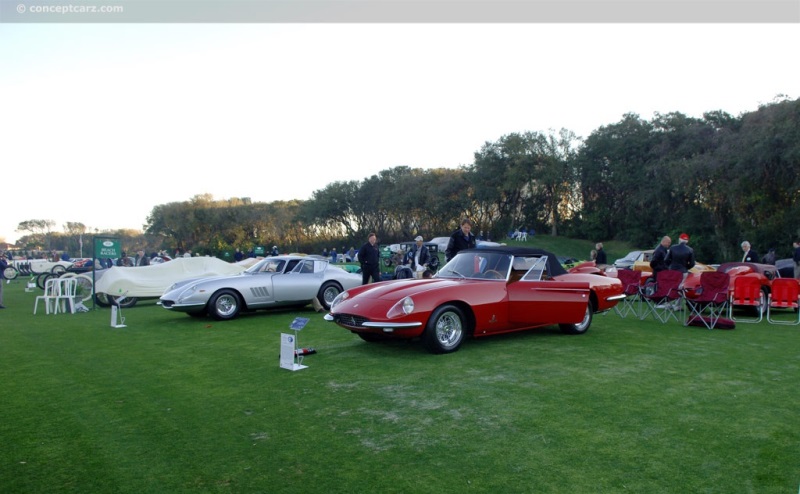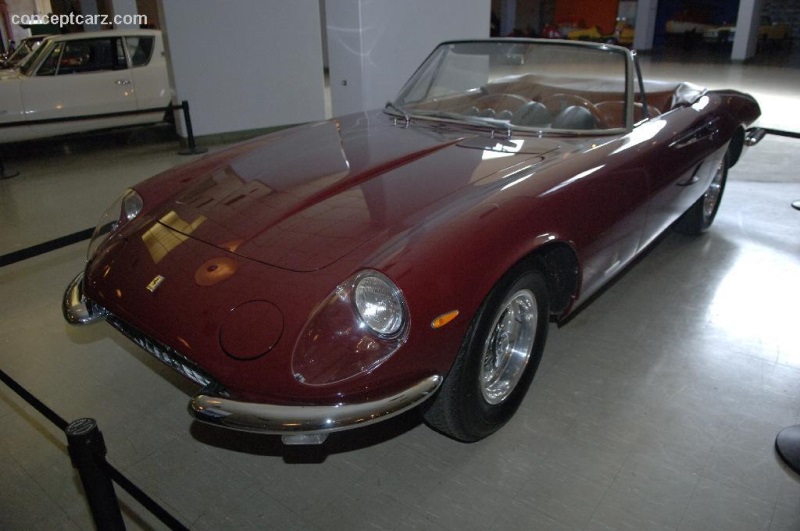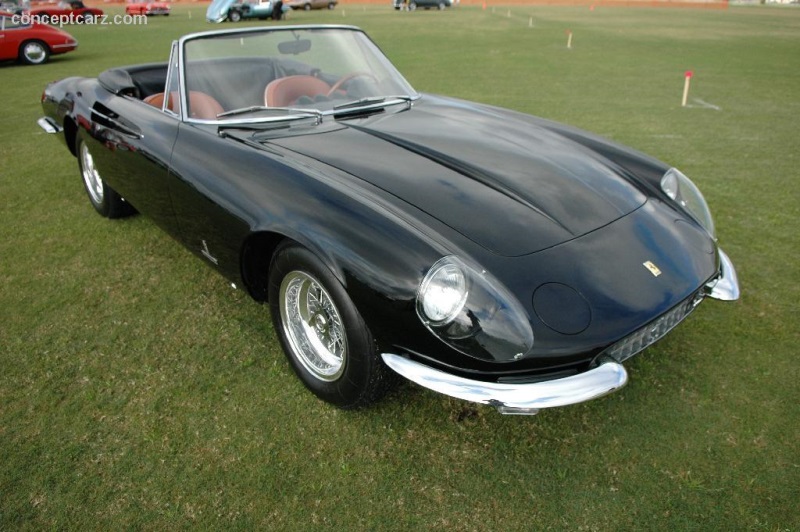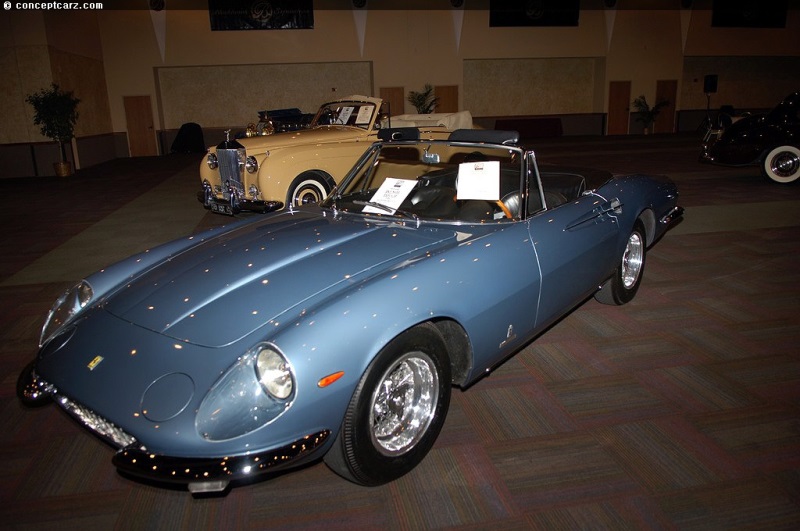1967 Ferrari 365 California Navigation
The popularity of Ferrari's road-going cars were built atop the burgeoing reputation and tremendous success of its racing program, with many of the racing components being incorported into its production vehicles. The lucrative American market was important to Ferrari and its successful entrance into this marketplace is largely credited to the efforts of Luigi Chinetti and importers like John von Neumann on the West Coast. Chinetti's N.A.R.T. (North American Racing Team), and the teams of Von Neumann, Parravano and others, demonstrated and promoted the cars' performance on American soil, and combined with the factory affiliated teams, successfully generated sales both of new racing cars and recycled team cars. 
Spyder by Pininfarina
Chassis #: 9985
View info and historyFerrari created specific models for the North American market and the racing classes that attracted wealthy amateur and professional drivers, such as the two-liter Monzas and Mondials. The 375 America and Superamerica series were developed for American buyers seeking luxurious Gran Turismos powered by large engines. Niche markets were identified by American dealers and Ferrari built the cars to accommodate their discerning clientele. These often resulted in small series production that combined the gifted talents of coachbuilders such as Pinin Farina and Scaglietti, with the legendary Ferrari performance. At the same time, Ferrari developed, built, raced, and successfully sold dual-purpose gran turismos that favored lightweight construction while sacrificing luxury and creature comforts. The list of thinly disguised racecars includes the 250MM and the 340 Mexico, along with Ferrari GT racers of the fifties. The company's first dual-purpose vehicle to achieve some semblance of series production was the second series of 250 GT Europa powered by the three-liter Colombo engine. The Boano/Ellena 250 GT coupes were soon complemented by the arrival of Pinin Farina cabriolets that were luxuriously appointed custom creations built specifically for open-air driving along the boulevards of sunny resorts. The American market, however, desired something more than a comfortably appointed cabriolet or a fast, sparsely equipped Berlinetta. Instead, they wanted a sparsely equipped convertible with the performance of a Ferrari sports car, essentially a convertible counterpart to the Tour de France berlienttas. Either John von Neumann or Luigi Chinetti first made Ferrari aware of this niche market, and Ferrari responded with the 250 California Spyder. The design of the California Spyder was created by Pinin Farina and based on the design of the Tour de France. The elegant and graceful curves, raked windshield, and clean roofless lines were skillfully rendered into metal by Scaglietti. Its beauty was equally matched by its performance, and production ended in 1963 after just over 100 examples had been produced.
Spyder by Pininfarina
Chassis #: 9935
Engine #: 9935
View info and history
Auction entries : 2Ferrari re-employed the formula in the spring of 1966, with the introduction of the 365 California Spyder at the Geneva Motor Show, showcased alongside the 330 GTC. Both the engine and chassis were sourced from the 330 Series, with a re-worked wheelbase size of 104.3-inches, and its suspension comprised of an independent setup in the front with double wishbones and coil springs, while the rear received a solid axle with semi-elliptical leaf springs. The engine was backed by a five-speed manual gearbox and four-wheel disc brakes provided the stopping power. The California was equipped with a long-block, 4,390cc V12 (Tipo 217 B 4.4-liter) engine with single overhead camshafts per bank, three Weber carburetors, 8.8:1 compression ratio, and delivering 320 horsepower. A similar engine had initially been developed for use in the 365P prototype privateer sports racing cars of the mid-sixties. The styling was created by American Tom Tjaarda, working for Pininfarina at the time, with design cues that included covered headlights, popup driving lights, and an angular rear end with a slight Kamm tail. The rear-end light cluster was an unusual design for Pininfarina, but one that would be applied to future mid-engine Ferraris. The door handle treatment gave the impression of a mid-engine layout, with faux air intakes. 
Spyder by Pininfarina
Chassis #: 9889
View info and historyJust 14 examples of the 365 California were built from 1966 through 1967 and each wore identical bodywork, which helped keep the already high production costs down, yet was still the most expensive Ferrari road car at the time.
by Daniel Vaughan | Mar 2021
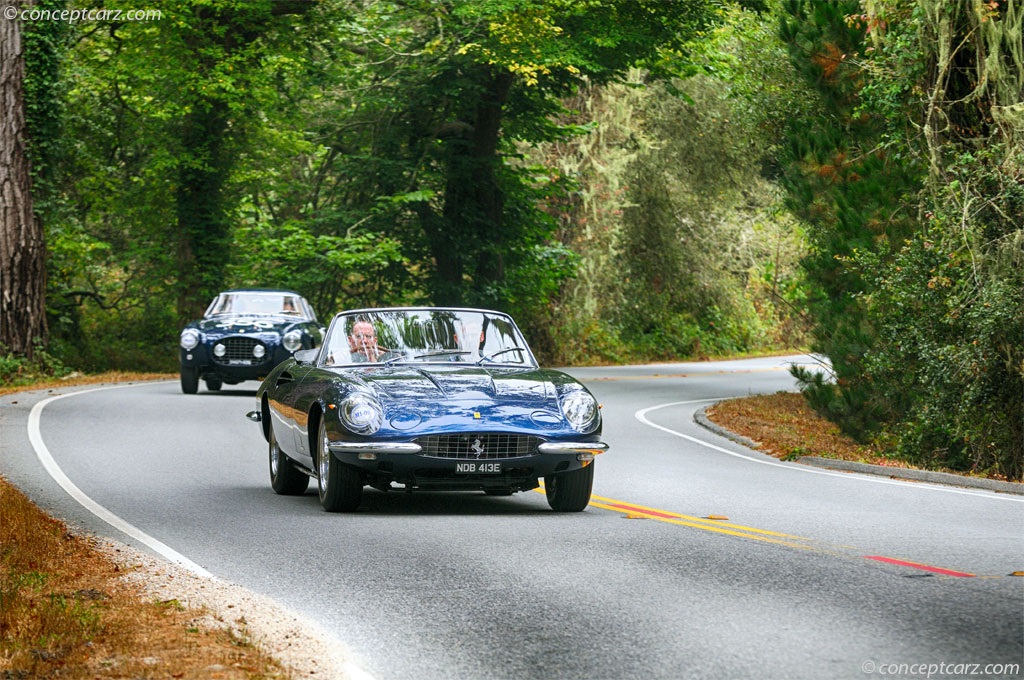
Spyder by Pininfarina
Chassis #: 9985
View info and history
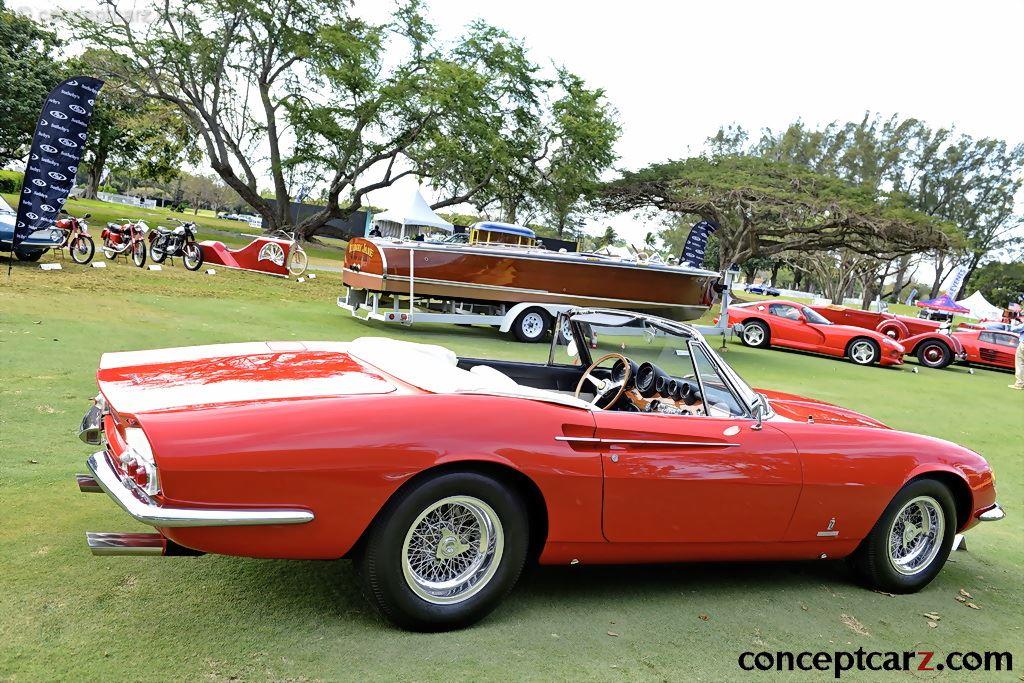
Spyder by Pininfarina
Chassis #: 9935
Engine #: 9935
View info and history
Auction entries : 2
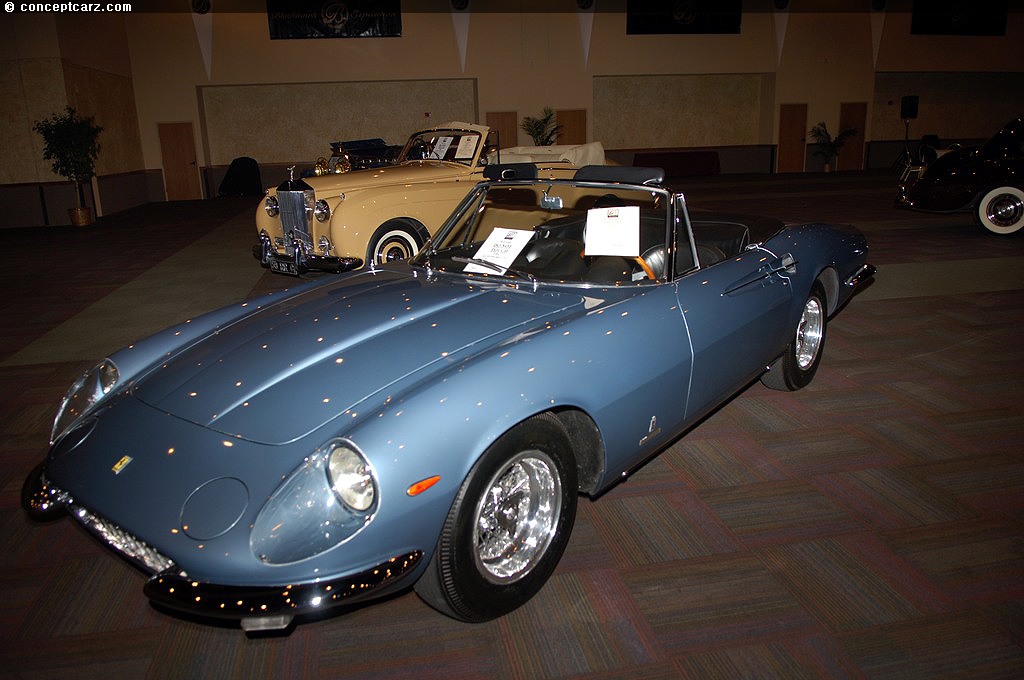
Spyder by Pininfarina
Chassis #: 9889
View info and history
by Daniel Vaughan | Mar 2021
Related Reading : Ferrari 365 History
The 365 Series was introduced in the late 1960s and stayed in production until the early 1970s. The 365s were often powered by a Columbo SOHC 4390 cc V-12 engine with three Weber carburetors capable of producing around 300 horsepower. The front and rear suspension for most of the series was independent with double wishbones and coil springs. The 365 GT4 22 had an independent with transverse parallelograms....
Continue Reading >>
Continue Reading >>
- 1967 Ferrari 365 California Menu
- Article
- Image gallery
- Valuation
- Specifications
- Profiles
Ferrari
Similar Vehicles
Similar Automakers
Similarly Sized Vehicles
from 1967
1967 Ferrari 365 California Vehicle Profiles
Recent Vehicle Additions
Performance and Specification Comparison
365 California Specification Comparison by Year
Year
Production
Wheelbase
Engine
Prices
Related Automotive News

Show-Quality, Coachbuilt Italian Exotics, Including Zagato-Bodied Maserati A6G/54 Berlinetta and ex-Emperor Bao Dai Ferrari 410 Superamerica, Announced for Pebble Beach
Gooding %26 Companys Pebble Beach Auctions to feature lineup of concours-level Italian classics from Ferrari, Maserati, Lamborghini, Lancia, and a one-off Serenissima by Ghia.
International auction house Gooding %26 Company has announced...

Pebble Beach Auctions Online Catalogue Now Live; Historic, Unrestored 1962 Ferrari 250 GT SWB Berlinetta Unveiled as Headlining Car
Gooding %26 Company launches its entire online catalogue for the Pebble Beach Auctions, announces a remarkably original 1962 Ferrari 250 GT SWB Berlinetta along major Italian star cars.
Gooding %26 Company, the official auction house of the Pebble...

Where it all started: Enzo's first production model heads up incomparable set of Maranello greats as Salon Privé celebrates Ferrari's 75th anniversary
Salon Privé Concours dElégance presented by Aviva assembles rare and hallowed Ferrari models, the like of which has never been seen before at a UK Concours
Notables include 1947 125 S (first production Ferrari ever built, on loan from factory),...

Phenomenal Ferraris and Italian Thoroughbreds Offered at Gooding & Company's Pebble Beach Auctions
The auction house announced a stable of Italian star cars, including a 1950 Ferrari 166 MM Berlinetta Le Mans, a 1961 Ferrari 400 Superamerica Series I Coupe Aerodinamico, and a 1954 Ferrari 500 Mondial Series I Spider.
A stunning group of star...

2015 Pebble Beach Concours d'Elegance Best of Show
PEBBLE BEACH, Calif. (August 17, 2015) -- An Italian Isotta Fraschini Tipo 8A Cabriolet that once turned heads and garnered top prizes in the classic era glided to victory at the 65th Pebble Beach Concours dElegance on Sunday.
The competition...





















